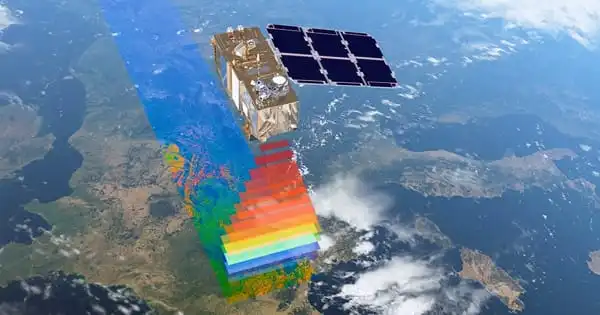A group of scientists used satellite technology to locate plastic trash around coastlines. Their technology assisted in detecting plastic that is not visible in satellite photos. According to the researchers of a study published in Remote Sensing, plastic waste in the marine environment is a “globally relevant concern,” with an estimated eight million tons of debris entering the waterways each year.
Geospatial experts have discovered a method to detect plastic pollution on remote beaches that is not visible in traditional satellite photos, bringing us one step closer to worldwide monitoring options. Every year, millions of tons of plastic flood the oceans. While stemming this flow is critical, so is locating what is currently there and cleaning it up. This cutting-edge research harnesses the latest in satellite technology to do just that.
The study, which was just published in Remote Sensing, exploited the distinctive infrared signals reflected by plastics to distinguish even the smallest fragments among huge areas of sand and boulders. This lays the groundwork for plastics to be spotted in satellite photos where the plastics are tiny than a pixel.
Keeping plastic out of the ocean is a global challenge. But if we can discover and remove them as soon as possible, that’s the next best thing. At the present, passing vessels that alert authorities are tracking plastic waste. The use of satellites will allow for more frequent and consistent observations. Our findings could help organizations who handle remote coastal and marine garbage cleanups know where to focus their efforts.
Jenna Guffogg
Jenna Guffogg, PhD candidate at RMIT University in Melbourne, Australia, noted that monitoring beaches rather than oceans made sense because it is easier to collect trash from beaches.
“Keeping plastic out of the ocean is a global challenge. But if we can discover and remove them as soon as possible, that’s the next best thing” She stated. “At the present, passing vessels that alert authorities are tracking plastic waste. The use of satellites will allow for more frequent and consistent observations. Our findings could help organizations who handle remote coastal and marine garbage cleanups know where to focus their efforts.”
In a relatively short period of time, the properties of plastic that were once seen as beneficial – convenience and lifespan – have transformed to represent a broad environmental hazard. Millions of tonnes of plastic trash enter our oceans each year as micro- to macroplastic litter. The annual economic cost to marine natural capital is estimated to be between $3300 and $33,000 per ton of plastic.

Larger plastics that enter ocean waters either float on the surface or sink owing to bio-fouling and/or ballasting. Macroplastics (>5 mm) may affect marine life through entanglement or ingestion if not removed by clean-up activities, however they will eventually fracture and decay into microplastics. Detecting bigger floating plastics in coastal waters before they get entangled, eaten, exported, and/or fragmented may aid in answering critical questions concerning source, routes, and trends.
Guffogg and her colleagues conducted fieldwork on the isolated beaches of Australia’s Cocos (Keeling) Islands, employing sensing equipment to measure how infrared light was reflected by various types of plastic found on the islands. Researchers utilized spectral library plots to compare the reflectance of plastics with their cover to assess how much plastic washed up on the shore.
They compared spectral readings from weathered plastics to those from virgin polymers that had not been exposed to environmental degradation and discovered minimal change in the results. This means that regardless of the shape, color, or condition of the plastic, it may be detected remotely and the location communicated with clean-up squads. Other applications could include monitoring an area’s health based on the amount of plastic in the environment.
Simon Jones, RMIT Professor of Remote Sensing, explained that the study was looking at methods to use satellites to see things that the human eye cannot. “We’re planning to launch satellites with significantly stronger remote sensing capabilities in the coming years,” he stated. “We’re working on methods to use these new satellites to combat marine garbage.”
Plastic detection research employing aerial data, models, and theoretical studies have shown the capacity to identify macroplastics in optical data. Satellite remote sensing is the most widely used technique for collecting high-quality, uniform optical imagery at global scales. However, few studies have been successful in detecting floating macroplastics in the marine environment. While the real scale of the plastic problem in the Cocos (Keeling) Islands has yet to be established, future investigations Guffogg and his colleagues are working on will attempt to answer this question.





